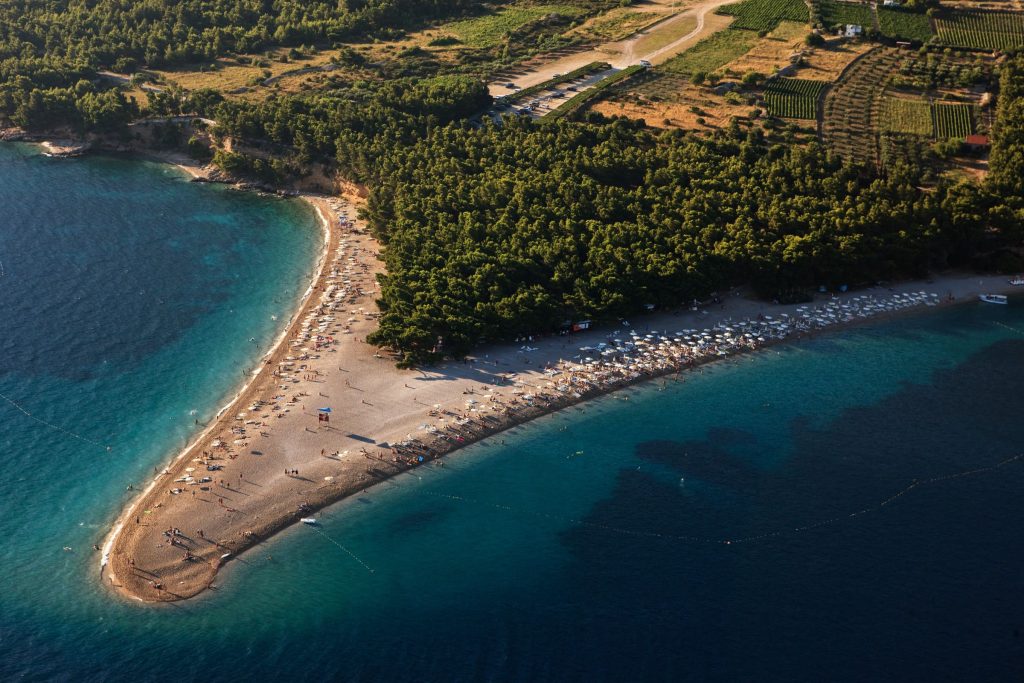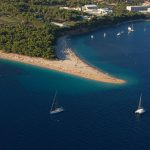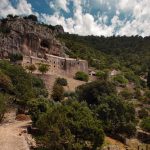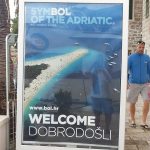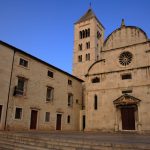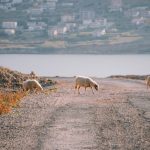Brač – Island of culture and adventure
Brač is the island closest to Split. In fact, for years, the word Brač was a synomin for an island, and people of Split used to refer to all Dalmatian islands as Brač I, Brač II, Brač III, depending on how far they were from their city. It is an island of immense diversity, an island of culture, adventure and of course history spanning over centuries. Goran Antonijević and Danni Matijaca compiled 25 facts about the island they both originate from and shared it with us on February 08, 2016.
1. Get to Brač and see Italy
Brač is the „tallest“ island in the Adriatic, with its highest peak Vidova Gora that stretches up to 778 meters above sea level. On a clear day, and especially after a day of strong Bura wind, one can see Italy while standing on the top of Vidova Gora. But that’s not the only reason why you should visit for the view is breathtaking and perfect for panoramic pictures without the use of a drone. Surrounding islands and world famous “Zlatni Rat” beach in Bol are right under your feet, and you can drive, hike or cycle up to Vidova Gora.

2. Zlatni rat – the beach that keeps on moving
Zlatni Rat is a one-kilometre long beach made of pebbles that have been rolling down from Vidova Gora for hundreds of thousands of years and the sea has been shaping them into perfect boulders for centuries. Depending on the sea currents and wind change, its peak shifts left and right, sometimes up to 50 meters, as we were able to witness earlier this year. If you fall asleep on the beach, you might wake up wet because the beach moved while you were in la-la land. And btw, they say some of the pebbles from Zlatni Rat have magical powers, so start looking. Zlatni Rat is also a haven for kite surfers, wind surfers and all other water sports enthusiasts.
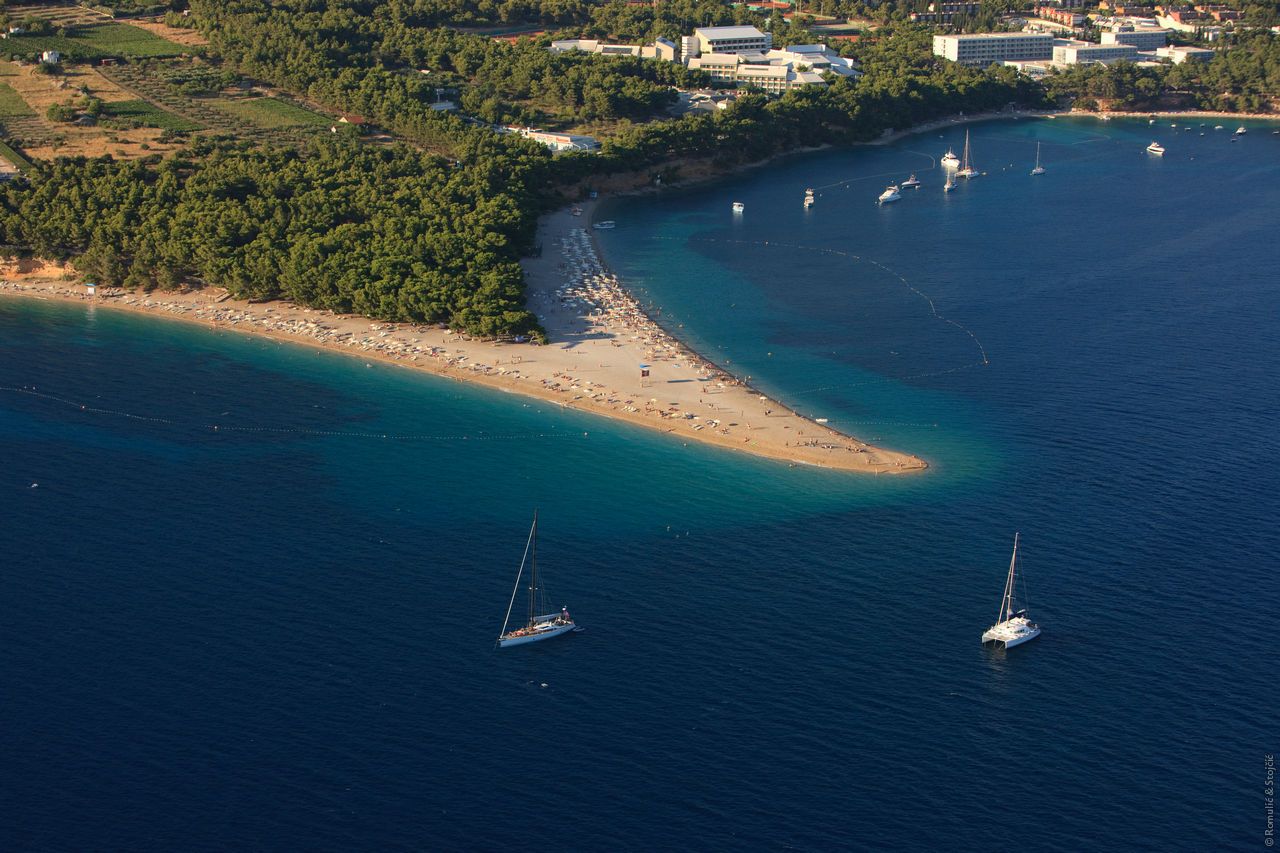
Photo: Copyright Romulic and Stojcic
3. People of Brač might not be from Mars but….
If you speak to somebody from Split, maybe you will hear him say that people from Brač are not from this planet. All local legends aside, this island has a whole asteroid named after it. Brač is orbiting around Sun somewhere between Mars and Jupiter. It is just as big as Brač island, no, it is not made out of famous Brač marble and who knows, maybe there’s a Little Prince on it growing olive trees.
4. Bridge over troubled water
Once upon a time, Brač was one of the very few islands in Croatia with its own river. It was called Elaphusa or Bretanida, depending on which source you choose to believe. The river is now long gone, but on top of Veliki Dolac, there is still an old bridge which was an Austro – Hungarian project so the locals call it the Franz Joseph Bridge. It was destroyed by a flood and rebuilt in 1898 even though the ground beneath it is as dry as sand. Today it is used by free climbers and it is a part of a fantastic walking path towards Sutivan or Ložišće.

5. Out of the ordinary
Vanka Regule Festival (translated Out the Ordinary) based in the town of Sutivan, isn’t your everyday sports competition. It is more of an ad hoc gathering of like-minded individuals looking to have fun while enjoying extreme sports; mountain bike racing, free-climbing, and original mixes of various outdoor sports with the legendary tent-town (šator grad)as the centre of it all. Lonely Planet describes it as the X-games meet Woodstock. Need we to say more?
6. Eine Kleine Nachtregatta
In Postira there is a traditional “Little Night regatta“, only night regatta in Croatia that is possible thanks to the unique natural phenomenon – the night air flow called “Gažul ” which comes down on summer nights from Vidova Gora to the Postira port. The tradition of night sailing in Postira Harbor began at the start of the 20th century when locals started using boats for pleasure, not only for hard work. This particular regatta is also a sailing event with the highest number of spectators in the country since it is held within the Postira harbour and the setting is very much like a theatre for more than 2 000 people and a professional commentator guiding them through the event. Whilst sailing, yachtsmen and spectators are followed by the sounds of Mozart’s Serenade No. 13, creating a unique experience. A Little Night Regatta is also renowned for its fantastic jam-session music event after the race, with some of the best musicians from the region coming down for an impromptu gig with friends and fellow musicians.
7. Oldest settlement on the island
If you think the first settlement on the island was created by the sea, you’re very wrong. The oldest village and the very first settlement on Brač were created in the town of Škrip, some 10 km inland from Supetar. Škrip tells the complete story of this island and its settlers through the ages with remains and archaeological sites spanning across its 3000-year-old history. Some historians believe it used to be a Greek colony, even though Greeks usually built their settlements on the coast, it was also an Ilyric settlement and a place of refuge for the people of Salona once their city was attacked. Walking through the town you can see numerous monuments such as the remains of the old defense wall which is the reason many refer to Škrip as the Croatian Mycenae, castle of Cerinić, a Roman temple, a few sarcophagi, a mausoleum from the 3rd century, tower of Radojkvić, cemetery with the ancient Chapel of the Holy Spirit, parish church of St.Helena with the most harmonious baroque facade on Brač and the nunnery of St. Anthony. Two museums are not to be missed in Škrip – Island Brač Museum and the Museum of Olive Oil. Yes, people of Brač are very proud of their olive oil, a topic which we will also cover in this article.
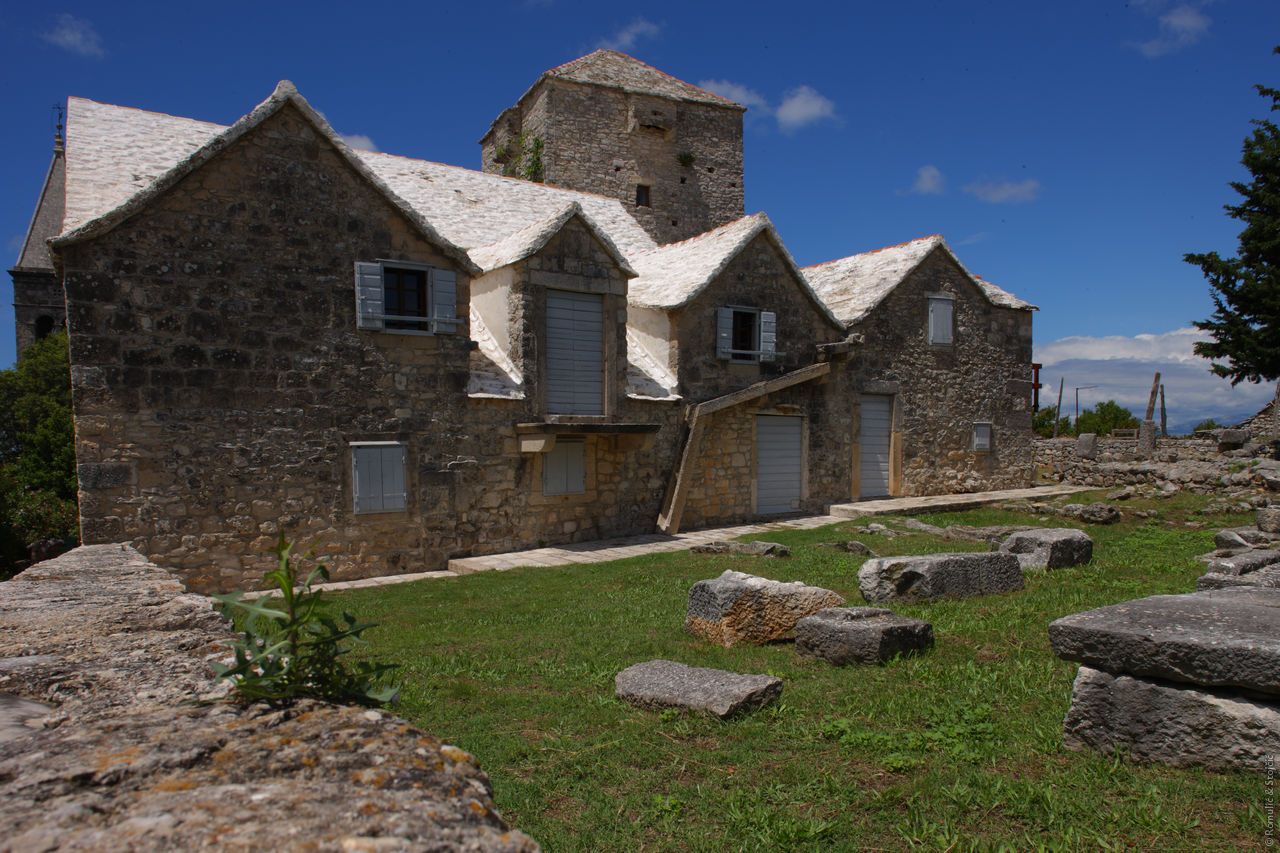
Photo: Copyright Romulic and Stojcic
8. Freedom carved in marble
There is no historical proof that White House is built using Brač marble, although it is a legend spread over the decades. Even so, this marble was used even by the Romans who recognized its unique brightness and durability. Diocletian palace, UN building in New York, House of Parliament in Budapest, and many more have this material built in, and stone masons from Brač are famous for their skills. Exploiting marble started with the Romans, but carving mastery was started by one slave Antonio Standelpergher (Štambuk) who bought his freedom with his incredible stonemason skills, and afterward, his legacy became a big part of Brač heritage. One cannot mention Brač marble without adding a few lines about the stonemason school in Pučišća (even though we already reported on it HERE). Not only is the building a fantastic example of mastery and craftsmanship of generations of stonemasons on this island, it also gives you a fantastic insight into the love and pride people of Brač have for this craft and with how much care they are passing their knowledge on to new generations.

9. Monument capital of the world
Selca, the largest town on the eastern side of Brač is the town with most monuments per capita in the world. Even though it has a population of just over 700, its inhabitants are very passionate about raising monuments to honour famous figures so the town now has 14 monuments and 21 memorial tablet with inscriptions covering everything from poetry to famous historic dates. Even though all monuments represent men, 5 memorial tablets are dedicated to famous women so they’ve thought of everything. Selca was the first town in the world to erect a monument to the famous Russian novelist Leo Tolstoy (statue of Dostojevski is now keeping him company). Probably the most valuable monument is the donation from Croatia’s most famous sculptor Ivan Meštrović – statue The Heart of Jesus which is now located inside Chruch of Christ the King in Selca. Meštrović donated his original statue made out of plaster in 1956 and local artists covered it with melted cannon shells which were collected around the island after WWII.

10. Don’t even try to understand it
If you are familiar with the Croatian language, when on Brač, this might not be as useful as you think. Brač has more than ten different dialects, and even Croatians have trouble understanding some of them. However, since English is nowadays taught in every school on Brač, there is always a way to get around this problem. Getting around their unique sense of directions is another story. Which way to this charming town – left or right? People from Brač would say “brž’ je, brž ni” – maybe it is, and maybe it isn’t.

Photo: Natasha 365 Brac
11. A house in a house
In Bol, there is the ‘house in a house’. The story says that the house was created in the 19th century when three brothers from Vuković family married three Spanish women and decided to build a big house (Paloc) on their land. However, there was already a house located there, built by a local peasant called Marko. The brothers offered Marko a handsome amount for the house, but Marko refused. Influential brothers then sought help from the local authorities but Marko had a huge fight and even threatened to kill the mayor. Fearing retribution, Marko fled to the Dubrovnik Republic and brothers began to build the walls around Marko’s house, planning to bring it down in the process. As they sailed to Venice to get the material for the building, they were caught in a storm and died in a shipwreck. Since they had no heirs, Marko came back to live in his old house, surrounded by the walls of the unfinished house that are still there today.

Photo: Zaklada Otok Brac
12. Mrduja, an ancient dispute resolved by modern administration
Mrduja is an islet between Brač and Šolta. Legend says people from both islands were claiming ownership and they decided to resolve the dispute by tying the robe around the islet and playing tug-of-war. This is now reenacted once a year for locals and tourists, but regardless of who wins this year, we have some bad news for Šolta. Administratively, Mrduja belongs to Brač and no matter how hard you pull that fact will not change.
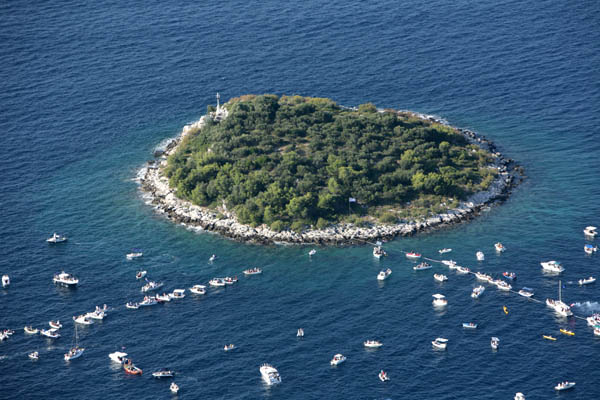
Annual tug-of-war competition around Mrduja islet, Photo Supetar Tourist Board
13. Trojan war and Brač
There is a legend that Brač was originally inhabited as the result of The Trojan war. Allegedly, Antenor, one of the wisest Trojans, met with Ulysses and Menelaus in order to negotiate the return of Helen of Troy. Negotiations were unsuccessful, and, according to the legend, Anternor’s life was spared after the fall of Troy due to this effort, so he settled on Brač along with a shepherd, a seaman and a farmer who all brought olives, vine and one cocoon containing the very first cricket to hatch on Brač.
14. Homo Sapiens
Forget the Trojan War, forget the Romans, Homo sapiens were wandering around Brač in the Epipaleolithic and Mesolithic age. In Kopačina cave, near Donji Humac, there is an archaeological site divided into two massive halls containing more than 20 000 bones of domestic animals and primitive tools used by our ancestors such as axes, knives and arrows. An axe found in the cave which dates back to the early Bronze Age is the oldest of its kind ever found on an island in the Adriatic.
Photo: Brac online
15. Homo trajektus (or Homo Ferrius)
A term made up by a journalist who was travelling from Supetar to Split and back on a daily basis, as trajekt is a ferry in Croatian. Thing is, ferry travel time on that 8 nautical mile route is approximately one hour, and being so, people from towns and villages on Brač meet there regularly. It can be fun, especially if you are lucky enough to find yourself travelling from Split to Supetar after some big Hajduk game, with a ferry being packed with fans celebrating a win. And if you want to catch up with the hottest island gossip, forget cafe bars, and head towards the ferry!

16. Sometimes you wanna go where everybody knows your name
Come to Brač, pick your place to drink coffee and have breakfast, and take your time. If not on a second, but surely on the third day, a waiter will bring your preferred kind of coffee, without even waiting for you to your order. Other guests will greet you, most of them will know your name, and you will be a local. Heck, they’ll even yell at newcomers if they try and take your spot. If you come back the year after, it will be the same. This is not exactly applicable in tourist hot-spots such as Bol or even Supetar but in small and hidden gems of Brač.

17. The Blaca desert
A quick lesson in Croatian; word pustinja in Croatian is a translation of the word desert. Even many Croatians don’t know that the word pustinja can also be used for a monastery. As there is Blaca monastery, or in Croatian, Pustinja Blaca, a lot of people expect to see camels in this location. It is actually a monastery founded in 15th century by Christian monks fleeing from the Ottoman invasion of the Croatian mainland. It is a site to see, as it looks as it was carved into the mountain, and apart from being a refuge, it was an important scientific venue in history, as it was equipped with the largest telescope in southeastern Europe in its time.

18. Home of the weirdest bonsai tree
In Nerežišća, there is a wild black pine bonsai tree. It is growing from the roof slabs of the medieval St. Peter’s church and even though the pine tree is over 100 years old, it only ever grew one meter in height. It’s been protected as natural heritage since 1969.
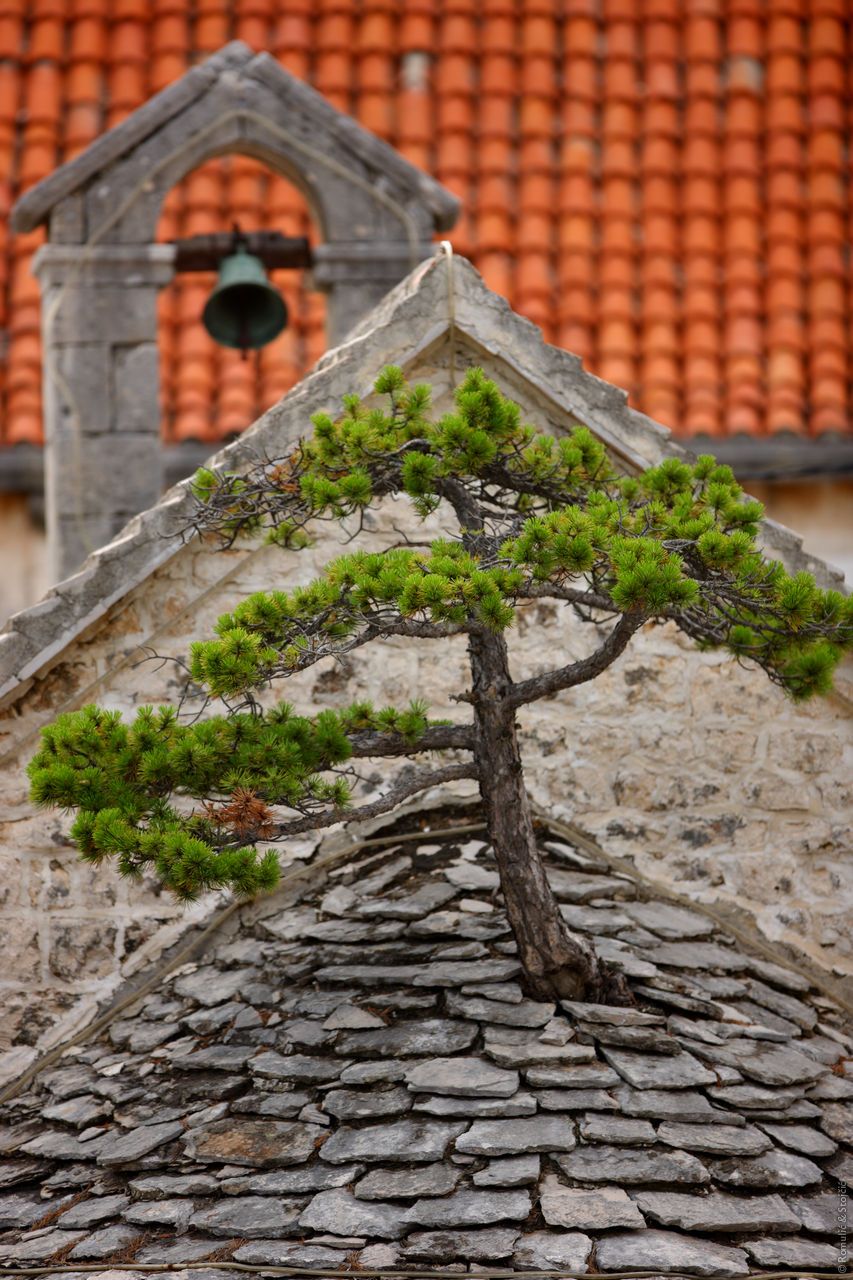
Photo copyright Romulic and Stojcic
19. Olive obsession
Brač is the home to 30% of all olive trees in Dalmatia, and a home to some of the best olive oils in the world. There is one indigenous olive sort grown only on island Brač called Buhavica, you can find it around Novo Selo and only 50 trees exist. A bottle of olive oil made from those olives is priced at around 150 Euros but worth every cent. Back in the 19th century, there were almost 2 million olive trees growing on Brač, and around 500 000 are cultivated today.
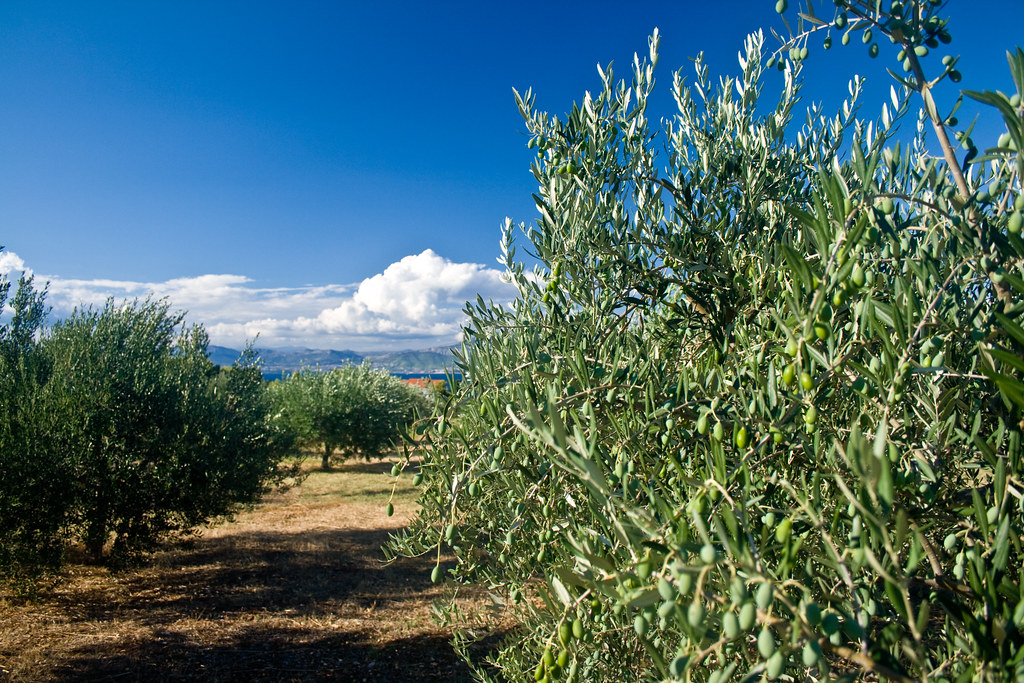
20. Eat it, don’t ask what’s in it
If a local guy invites you to dinner, you will probably end up by the open fire, and will be offered some out-of-this-world lamb. If your host is following the tradition, nothing is to be thrown away, and you will have Vitalac as a starter. It is a big skewer with kidneys, liver, heart – in other words, lamb offal, wrapped in the freshly butchered lamb (very similar to Greek Kokoretsi). If it was a very young lamb (still suckling), the intestine won’t be washed – just wiped by hand to prevent it from ripping. It bakes for an hour over an open fire until the intestines get crispy, then it is cut into smaller pieces and served with salt. It’s actually quite delicious if you don’t know what you’re eating, and if we tell you it is listed under the nonmaterial cultural heritage of the island, you’ll know how important it is for local folk. Goat and sheep cheese from Pražnica and Humac are very famous. Traditional drink for kids on Brač called Hmutica contains both red wine and fresh goat milk, but my friend Danni wouldn’t recommend it even to her worst enemy since she still has childhood nightmares from this drink, and as my grandmother also stuffed me with that in my early years, I couldn’t agree more…

Photo Youtube screen shot hotel Bretanida
21. Hrapoćuša or Hrapaćuša – the Brač Aphrodisiac
Ok, it is a local traditional cake, another protected non-material cultural heritage of island Brač and a calorie bomb since it is made from almost a kilo of walnuts, 20 eggs, just under a kilo of sugar, orange peel, rum and secret spice that makes it so nice. We say secret because most women on Brač will carry their recipe to the grave and never, ever share it with anyone. This is the oldest cake on the island and every year you can visit the Night of Hrapoćuša in Dol. The reason we have listed it here is its name, We dare you to pronounce it. Hrapoćuša. But with a special, very soft ć…. It flies right off your tongue, doesn’t it?

22. Wild West live
Forget John Wayne, forget the cowboys from the movies, if you’re looking for a real feeling of the wild west, go to Gažul (shepherd’s resting place on Vidova Gora) for the cattle fair. It is a place to meet people who still keep livestock the way it was done 100 years ago, trading it old style, bargaining, brawling and drinking a lot during the process. The locals often call it „The silence of the lambs“, since, on average, more than 200 lambs get eaten in that venue in just one day.

23. Brač had dragons in a cave long before Game of Thrones came along
Located near the village of Murvica, Dragons Cave is not that easy to get to if you don’t like walking since it’s about a 50-minute uphill walk, but it is well worth the trouble not only because of the Cave but also because of the breathtaking vistas of the islands. Dragon’s cave is a monastery and it got its name from a carving in one of the walls. Leviathan (dragon) might have been inspired by the Book of Revelations but according to the Croatian legends, it is dedicated to dragon Veles from the Slavic mythology. His adversary Perun was seated in Vidova Gora (woods) and ruled over everything that was around him. They both fought for the affections of Mokos, a symbol of rebirth. Regardless of which theory of origin you decide to believe, and it is probably the combination of both, the cave provides a fascinating insight into the 15th-century monastic life. The cave is 20 meters long and divided into 4 rooms. The first chapel is dedicated to Madonna. Reliefs of Madonna with angels, moon, dragons and others are carved into the cliff. A visit to the Dragon’s Cave is only possible with a guide and the entire tour will take about 4 hours.
Here is a video of the Cave, yes, it is a few years old but one photo would do it justice
24. Fjera – every village has one
Heard of fiestas in Spain? On Brač, it is called fjera. Every town or village on Brač has its own patron saint, and on that day they stage a procession, they are all dressed up, and everything is serious during the day. In the evening, things go a bit on a wild side, and one can enjoy traditional party all night long. Get a guide, meet the locals and get crazy. Tip; best fieras are the farther away from the tourist areas, in little villages located inland.

Photo: Croatian Hot Spots
25. Brač is the Croatian Scotland
Think you know all the jokes about cheap Scots? Try some about people from Brač! There’s a joke here saying that Scotland was founded by a wasteful son who was banished from the island of Brač by his father. All kidding aside, the fact is that living on Brač was everything but easy, so in the old days, locals had to spare every penny to get by, and that’s how the jokes started. If you meet the locals and a joke about Bračani slips out of your mouth by mistake, don’t worry, they’ve heard them all. If you tell them a new one, they’ll even buy you a drink. Or, will they?
And just to prove people of Brač are not stingy, here’s one extra fact
26. Brač is Croatian Ireland
Did you know that more people of Brač origin live in the Americas than on Brač? It is estimated that as many as 400 000 people that originate from Brač live in South and North America, over 200 000 in Chile alone! Not to mention Australia. In the 20th century, more than 8000 people left Brač, most of them after WWI, and the population of Brač is nowadays around 14000.

https://upload.wikimedia.org/wikipedia/commons/8/81/951_Gaspra.jpg

